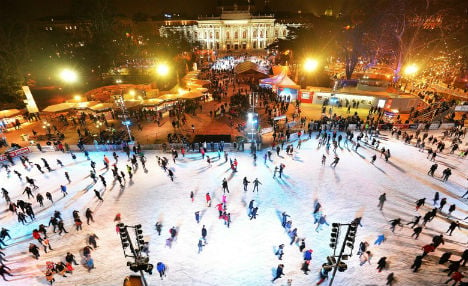Every year in Austria, around 4,300 people are so badly injured whilst ice skating that they have to be treated in hospital. Of these, nearly 2,000 are children under the age of 15, the Austrian Road Safety Board (KFV) said on Thursday.
More than 2.2 million people skate on ice rinks and frozen lakes in Austria every winter.
“Ice skating is one sport which is particularly good for strengthening the cardiovascular system,” Klaus Robatsch, head of research at the KFV said. But the risks, particularly for inexperienced skaters, shouldn’t be underestimated.
88 percent of ice skating injuries treated in hospital are due to falls, and 11 percent are due to collisions. 59 percent of all injuries are broken bones – with the most common being a broken wrist or forearm caused when a skater tries to break their fall with their hands.
Hand surgeon Martin Leixnering recommends wearing wrist protectors when skating, and says that painful cuts from another skater’s blades can be avoided by wearing gloves.
Doctors also treat head injuries where the skater has fallen over backwards and hit their head on the ice. The majority of hobby skaters don't wear helmets, although the KFV recommends helmets, particularly for children and teenagers. 40 percent of those under 15 don’t wear a helmet and around 18 percent suffer serious head injuries each year.
Those who enjoy skating on frozen lakes should be aware of trip hazards such as branches and should always monitor the temperature outdoors. If outdoor temperatures have been just a few degrees below freezing for several days, the ice is not safe to skate on.



 Please whitelist us to continue reading.
Please whitelist us to continue reading.